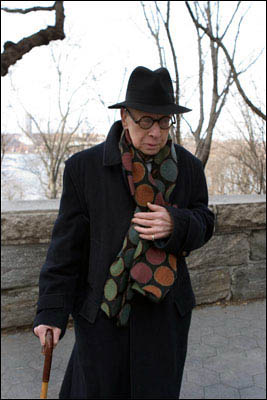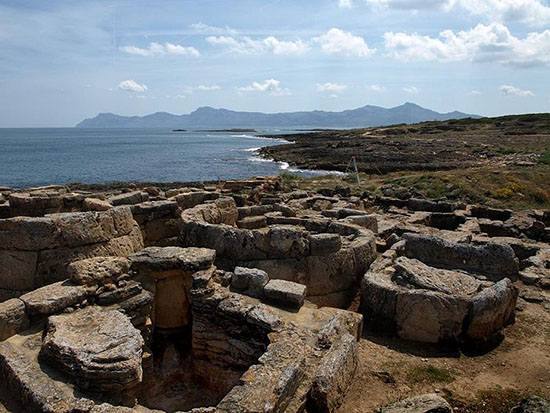It is with sadness that we note the recent
passing of the eminent Hispanist Karl-Ludwig Selig, Professor Emeritus of
Columbia University, who died in New York on December 1st, 2012 after a long
illness. A prolific scholar who published in many areas, Selig's notes and
brief articles, many bibliographic in nature, can still be profitably mined by
scholars today for research directions that still need to be further explored.
Selig will be best remembered for his contributions to two main areas of scholarly
inquiry: Cervantes studies and Spanish emblematics. One of the founding members
of the Cervantes Society of America, Professor Selig published many important notes
and articles on Cervantes and contributed constantly to the CSA, whether in the
form of information included in its newsletters, or through his generous
financial support that continued unabated until his death. A student of Mario
Praz at the University of Rome, Selig's pioneering 1955 PhD Dissertation at the
University of Texas, Studies on Alciato
in Spain, (published in facsimile by Garland Press, 1990), blazed an important trail for the study of Spanish emblematics.
Other publications authored by Karl-Ludwig on emblematics or related fields are listed below.
Recibimos ayer con dolor la noticia del fallecimiento,
el primero de diciembre pasado, en Nueva York, del eminente hispanista
Karl-Ludwig Selig, profesor emérito de la Universidad de Columbia. Como investigador
prolífico y que prestó sus esfuerzos a diversas áreas culturales, firmó a lo
largo de su vida numerosas notas y breves artículos, muchos de carácter
bibliográfico, que han servido de fecundos puntos de partida para los estudiosos en
ámbitos que todavía merecen seguir profundizándose. Selig será recordado entre
nosotros en especial por sus contribuciones a dos zonas relevantes de la
literatura española: la obra de Cervantes y la literatura emblemática. Fue
miembro fundador de la Cervantes Society of America, con la que siempre colaboró
por medio de sus investigaciones, reseñas y boletines de
noticias pero, además, con una generosa ayuda económica que mantuvo hasta el
día de su muerte. Fue alumno de Mario Praz en la Universidad de Roma y presentó
en la Universidad de Texas, en 1955, una tesis, Studies on Alciato in Spain (hay
facsímil de Garland Press, 1990), que desbrozó el camino de los estudios de
emblemática en España Damos aquí una lista de sus obras relacionadas con este campo.
- «Emblèmes Religieux». En Dictionnaire De Spiritualité: Ascétique Et Mystique, Doctrine Et Histoire, París: G. Beauchesne et ses fils, 1932-1995, 605-609.
- «The Spanish Translations of Cesare Ripa's Iconologia». Itálica XXVIII, no. 4 de diciembre (1951): 254-256.
- «Góngora and Numismatics». Modern Language Notes 67 (1952): 47-50.
- «A Note on Cesare Ripa’s Iconologia». Italica 29 (1952): 108-09.
- «Poesías olvidadas de Alonso de Ledesma». Bulletin Hispanique 53 (1953): 191-199.
- «On a passage in Fray Luis de Leon's La Perfecta Casada». Modern Language Notes LXIX (1954): 102-103.
- «La Teoria dell'emblema in Spagna: i testi fondamentali». Convivium XIII, no. 4 (julio-agosto) (1955): 409-421.
- «The Spanish Translations of Alciato's Emblemata». Modern Language Notes LXX, no. mayo (1955): 354-359.
- «Addenda to Praz, Bibliography of Emblem Books». Modern Language Notes 70 (1955): 599-601.
- «Lastanosa and the Brohers Argensola». Modern Language Notes LXVII (1955): 429-431.
- «La Teoria Dell'emblema In Ispagna: I Testi Fondamentali». Convivium (Societä Editrice Internazionale) 3 (1955): 409-421.
- «The commentary of Juan de Mal Lara to Alciato´s Emblemata». Hispanic Review XXIV, no. 1 (1956): 26-41.
- «Gracián and Alciato's Emblemata». Comparative Literature VIII (1956): 1-11.
- «Concerning Solórzano Pereyra's Emblemata Regio-Politica and Andrés Mendo's Príncipe Perfecto». Modern Language Notes LXXI (1956): 283-287.
- «Due temi mitologici nel Rinascimento Spagnolo». Convivium (1956): 553-559.
- «Pero Mexía's Silva de varia lección and Horapollo's Hieroglyphica, Venezia 1605». Modern Language Notes LXXII (1957): 351-357.
- «Philostratus Imagines and Alciato's Emblemata». Modern Language Notes 72 (1957): 427-428.
- «Sulla fortuna spagnola degli Adagia di Erasmo». Convivium 25 (1957): 88-91.
- «Notes on Spanish Renaissance Lexicography». Convivium XXV (1957): 742-744.
- «Una traduzione spagnola degli Emblemata di Alciato». Convivium XXV (1957): 215-219.
- «A Spanish Collection of Emblem Books». Romance Notes 1 (1960): 131-132.
- The Library of Vicencio Juan de Lastanosa, Patron of Gracián. Ginebra: Droz, 1960.
- «The Blemata of Luis Tribaldos de Toledo». Hispanic Review 29 (1961): 52-53.
- «An Anti-Machiavellian Emblem». Italica 38, no. 2 (1961): 134-35.
- «Emblem Literature: Directions in Recent Scholarship». Yearbook of Comparative and General Literature XII (1963): 36-41.
- «Antonio Palomino y la tradición de la literatura emblemática en España». En Actas del I Congreso Internacional de Hispanistas, editado por Frank Pierce y Gril A. Jones, Oxford: The Dolphin Book, 1964, 443-446.
- «Three Spanish Libraries of Emblem Books and Compendia». En Essays in History and Literature Presented by Fellows of the Newberry Library to Stanley Pargellis, editado por Heinz Bluhm, Chicago: The Newberry Library, 1965, 81-90.
- «Some Remarks on Jan van der Noot». En Homenaje a Antonio Rodríguez Moñino, Madrid, 1966, 185-188.
- «Curiosa Bibliographica Greeniana». En Friendship's Garland: Essays Presented to Mario Praz on His Seventieth Birthday, editado por V. Gabrieli, Roma: Edizioni di storia e letteratura, 1966, 203-205.
- «Some Remarks on Gracián's Literary Taste and Judgements». En Homenaje a Gracián, Zaragoza: Institución Fernando el Católico, 1968, 155-162.
- «Algunos aspectos de la tradición emblemática en la literatura colonial». En Actas del III Congreso de la Asociación Internacional de Hispanistas, México: El Colegio de México, 1970, 833-837.
- «A Spanish Manuscript Translation of Alciato's Emblemata». Romanische Forschungen 82 (1970): 584.
- «Garcilaso and the Visual Arts. Remarks on Some Aspects of Visualization». En Interpretation und Vergleich. Festschrift für Walter Pabst, editado por Eberhard Leube y Ludwig Schrader, Berlín: Eric Schmidt Verlag, 1972, 302-309.
- «Persiles y Sigismunda: Notes on Pictures, Portraits and Portraiture». Hispanic Review 41 (1973): 305-312.
- «The Celestina and Literary Portraiture: Prolegomenon». En Estudios literarios de hispanistas norteamericanos dedicados a Helmut Hatzfeld con motivo de su 80 aniversario, editado por Josep M. Sola-Solé, Alessandro Crisafulli y Bruno M. Damiani, Barcelona: Ediciones Hispam, 1974, 471-575.
- «The Battle of the Sheep (Don Quijote I, xviii)». Revista Hispánica Moderna 38 (1974-75): 64-72.
- «The Heraldic Devices in the Battle of the Sheep (Don Quixote, I/18): Source vs. Convention». Revista Hispanica Moderna 39 (1976-1977): 139-40.
- «Gracián un Alciatos Emblemata». En Emblem und Emlematikrezeption, Darmstadt, 1978, 122-139.
- «Don Quijote, I/8-9 y la granada». En De los romances-villancico a la poesía de Claudio Rodriguez: 22 ensayos sobre las literaturas espanola e hispanoamericana en homenaje a Gustav Siebenmann, editado por José Manuel López de Abiada y Augusta López Bernasocchi, s.l.: José Esteban, 1984, 401-407.
- «Don Quixote II, 16-17: Don Quixote and the Lion». En Homenaje a Ana María Barrenechea, editado por Lía Schwartz y Isaías Lerner, Madrid: Castalia, 1984, 327-332.
- Studies on Alciato in Spain. Nueva York: Garland Publishing (Garland Studies in Comparative Literature), 1990.
- «Don Quixote and the Game of Chess». En The verbal and the visual. Essays in Honor of William Sebastian Hecksher, editado por Karl-Ludwig Selig y Elizabeth Sears, New York: Italica Press, 1990, 203-211.
- «La Agudeza y el arte de citar». En El mundo de Gracián. actas del coloquio Internacional de Berlín 1988, Berlín, 1990, 67-74.
- «Gracián y la emblemática: Nota de un emblematista de antaño». Anthropos. Documentos A: Genealogía Científica de la Cultura 5 (1993): 138.
- «George Richardson and the 'fame' of Ripa's Iconologia». Zeventiende eeuw 11, no. 1 (1995): 27-28.




